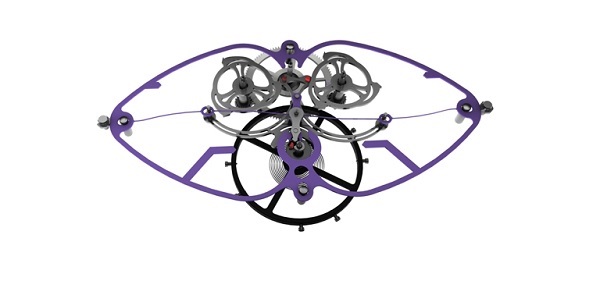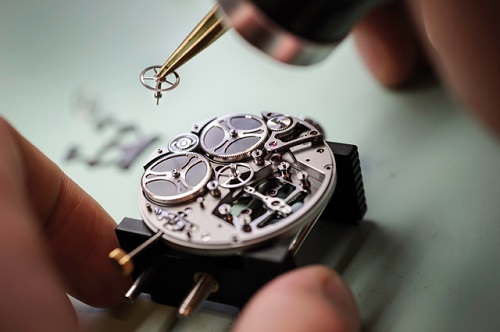Thomas Mudge, Girard-Perregaux and the Pursuit of Precision.

The Girard-Perregaux Constant Force Escapement has been perfected and cased-up for public enjoyment and viewing in time for BaselWorld - welcome to the new world of watchmaking precision.
Nicolas Déhon created it, Rolex rejected it, and its inspiration - so the story goes - involves its inventor's observation of the amassment and dispersal of the energy of a train ticket which he was idly handling - but of course that is only part of the story, the end product which has required more than five years of research and development is not that simple, and like every new development in watchmaking it involves mathematics, classical physics, quantum physics and geometry.
Among the illustrious exhibits at the British Museum is an Experimental Table Clock made by Thomas Mudge circa 1754. This timepiece contains the watchmakers first lever escapement, by far the most common type still in use today albeit in a modified and refined form. Its inspiration most certainly did not come from an epiphany moment while Mr. Mudge formed a "C" with his train ticket, because his ingenious solution to timekeeping precision came nearly a century before a network of railways existed in England.
Both escapements were created to solve the same conundrum, that of loss of amplitude as the power from the main spring decreases. But which is most impressive? The one which was created by gas light using rudimentary tools, or the one which is produced under sterile "clean room" conditions involving the most cutting-edge equipment available?
Actually both are, and I suspect you knew that already. Both are of considerable importance to the industy and curiously both are also brave.
Thomas Mudge, apprenticed to George Graham, would have felt compelled to not only assume the mantle of his former Master, but also to elevate his own standing. His reputation and standing were dependent on the scourge of watchmakers at that time, the increasingly demanding requirements of the Board of Longitude.
For Girard-Perregaux, bringing forth the next generation of escapement required considerable investment and also a healthy portion of audacity. This is a finicky industry full of sharp-eyed experts, even the layman is knowledgeable. If there are flaws they will be found - but there is much to gain, in watchmaking terms the pursuit of perfection is the daddy.
At the heart of "new watchmaking" is silicon. For this mechanism a single piece of silicon, measured in microns is compressed causing both halves to bend. When force is appled to this almost imperceptible strip of silicon, it becomes extremely well behaved and produces a precise quantity of energy as it changes from one direction to the other. Thus constant power is delivered to the oscillator which means constant amplitude and constant rate. We all knew this was coming but it is nonetheless a fine feather for Girard-Perregaux's horological cap.
Symmetry plays a structural role in the fundamental make-up of the calibre, and these elements translate superbly from movement to dial. The constant force mechanism demands and receives dial domination taking up the lower dial. A pristine subdial for the hours and minutes is flanked by the twin escapement wheels and over on the left a linear power reserve adds further aesthetic balance. The piece is housed in a 48mm white gold case.
No other industry represents and combines the traditional with the technological, the old and the new quite like watchmaking. Girard-Perregaux bring to this model the echoes of the past, the iconic Bridges alongside some components which are unlike anything we have seen before - to stunning effect.
Without doubt this is a showcase piece and one which Girard-Perregaux will be proud to exhibit to the public this year - if you have the chance, go-see - this is horological history in the making. As for the Thomas Mudge Experimental Table Clock? It is thought that Mudge created it with the intention of submitting it to the 'Board of Longitude' for the longitude prize, but then decided it was not quite good enough. This is indeed a finicky industry.
More from Girard-Perregaux here.
More Girard-Perregaux from me here.
More on the Thomas Mudge Clock here.




